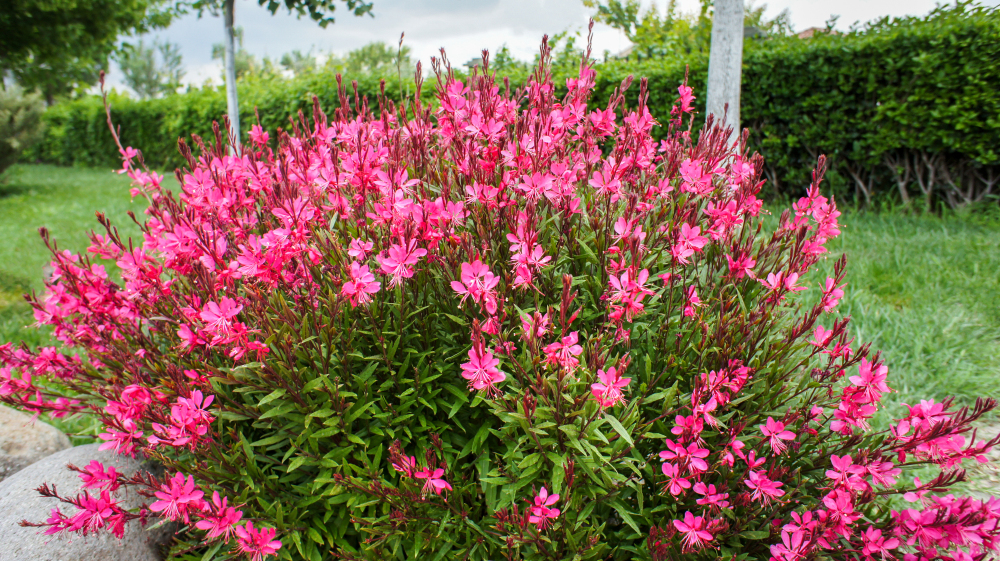
Graceful, airy, and effortlessly charming, Gaura (pronounced GOW-rah) is a perennial that adds movement and a delicate wildflower aesthetic to any garden. With its long, wand-like stems and fluttery blooms that resemble butterflies in flight, it’s no wonder Gaura’s common names include Bee Blossom and Whirling Butterflies.
Native to North America, Gaura is a hardy, drought-tolerant plant that blooms from late spring to fall, attracting pollinators and providing nonstop color with minimal maintenance. Whether planted in garden borders, cottage-style landscapes, or containers, it’s a standout choice for both casual and curated spaces.
Gaura thrives in full sun, needing at least 6 hours of direct sunlight daily to bloom abundantly. It can tolerate some light shade, especially in hot climates, but too little light can result in fewer blooms and leggy growth.
Place it in sunny garden beds or along walkways where it can dance in the breeze and soak up the light.
Once established, Gaura is remarkably drought-tolerant. Water newly planted Gaura regularly to help it establish a strong root system. After that, water only when the soil is dry—generally once a week or less, depending on your climate.
Avoid overwatering, as over saturated soil can lead to root rot or increase the risk of pests.
Gaura prefers well-draining soil and is tolerant of poor or sandy soils. It dislikes heavy clay or overly rich soil, which can retain too much moisture. If planting in containers, choose a light, fast-draining potting mix.
Amend garden soil with sand or fine gravel if needed to improve drainage.
Gaura is not a heavy feeder. In fact, over-fertilizing can lead to floppy growth and fewer blooms. If desired, you can apply a light dose of balanced fertilizer in early spring. In richer soils, it likely won’t need any feeding at all.
Gaura is hardy in USDA zones 5–9, though in cooler zones it may behave as a short-lived perennial or even an annual. It tolerates heat, humidity, drought, and poor soil, making it perfect for tough garden spots.
It prefers temperatures between 60–85°F (15–29°C) and is ideal for xeriscaping or low-maintenance garden designs.
Gaura is low-maintenance, but a few quick trims can enhance its shape and bloom time. To encourage continued flowering, deadhead spent blooms or shear the plant back by one-third if it begins to look tired midsummer.
In late fall, cut it back to the base to prepare for winter dormancy.
One of Gaura’s best traits is its natural resistance to pests and diseases. It’s rarely bothered by insects and isn’t prone to mildew or rot when grown in well-drained soil. Its resilience makes it a great option for both novice and experienced gardeners.
Gaura can be propagated by division, cuttings, or seeds. Divide mature plants in early spring or take softwood cuttings in late spring. Seeds can be sown directly outdoors in spring after frost has passed.
Gaura is considered non-toxic to pets, making it a safe choice for gardens where cats and dogs roam. As always, discourage chewing or ingestion to avoid upset tummies.